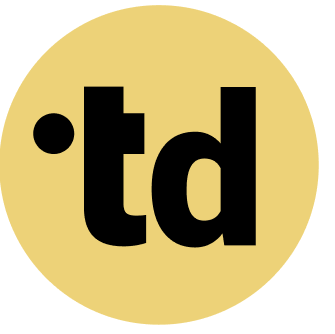Key Takeaways
Dynamic resource allocation tools are essential for managing hybrid teams of humans and AI, turning structural chaos into operational clarity.
Unclear roles are a major risk; studies show 'clear responsibilities' are rated 4.58 out of 5 in importance for EU project success.
Employee fatigue from constant change is high (77%), but dynamic tools can reduce overload and improve retention by creating stable, clear workflows.
Every team is on a hero's journey, battling the dragons of overload and confusion. The modern workplace, a mix of human talent and AI agents, adds new levels of complexity. Static plans and rigid hierarchies no longer work. Success requires agility, clarity, and the right tools to adapt in real time. This is where dynamic resource allocation comes in-not as another layer of management, but as a magic wand for Team Architects. It delivers the clarity and flow needed to build resilient, high-performing teams ready for any challenge. Let's explore how to make your team the hero of its own story.
Practical Framework for Team Architects
As a Team Architect, you can apply these principles to your organization:
- Map Current State: Document existing roles and responsibilities using a tool like teamdecoder.
- Identify Gaps: Where are roles unclear? Where do humans and AI agents overlap?
- Define Clear Boundaries: Specify which tasks are handled by humans vs. AI agents.
- Create Accountability: Assign clear decision rights for each role.
- Iterate and Improve: Continuously refine based on team feedback.
Facing the Music: The Real Cost of Poor Resource Allocation
Teams are burning out from more than just long hours; they are struggling with ambiguity. When roles are unclear, project success is at risk, with studies on EU-funded projects rating 'clear responsibilities' as a 4.58 out of 5 for importance. This lack of clarity leads to duplicated work and drains motivation, directly impacting your bottom line. In fact, 77 percent of employees report feeling exhausted by constant organizational change. This isn't just a feeling; it's a critical business risk that leads to a a significant number of decline in employees' intent to stay. The chaos of mismanaged resources creates a cycle of stress and inefficiency. A recent survey found that nearly 50 percent of employees view their current performance level as unsustainable. This pressure cooker environment stifles the very innovation your organization needs to grow. It's time to address the underlying issues with a more dynamic approach to workload planning and allocation.
Teams Just Wanna Have Fun: Shifting to a Dynamic Model
Dynamic resource allocation is about moving from rigid, top-down assignments to a fluid, real-time system of matching skills to tasks. It's a core principle of modern organizational development. This approach empowers teams to adapt quickly, a key factor for success in hybrid work environments. A study by the Fraunhofer Institute highlights that agile, iterative cooperation is vital for designing successful distributed works. Instead of a static org chart, think of your team as a modular toolkit, with skills and roles that can be combined to meet any challenge. This model increases employee satisfaction by giving them more autonomy over their work. You can try teamdecoder for free to see how visualizing your team's skills can make allocation simpler. This shift requires new tools and a new mindset, moving beyond who reports to whom and focusing on who can do what, right now. This clarity is the first step toward better workload management.
Make Bots and Humans Click: Integrating AI into Your Team Structure
The future of work is a hybrid of human and AI employees, and Germany is investing heavily in this transformation. Integrating AI agents requires a fresh look at roles and responsibilities. Dynamic allocation tools help you see where AI can handle repetitive tasks, freeing up human team members for strategic, creative work. Research on the future of work in Germany shows this collaboration is redefining skill requirements and job functions. This isn't about replacing people; it's about augmenting their capabilities and creating a stronger, more efficient team. For Team Architects, the key is to map out workflows that seamlessly blend human oversight with AI execution. Here's how to start:
- Identify tasks with high-volume, repetitive processes suitable for AI agents.
- Define new roles focused on managing, training, and auditing these AI systems.
- Use a central platform to visualize the workload distribution between humans and AI.
- Establish clear protocols for when tasks should be escalated from an AI to a human.
- Invest in training to upskill your team for effective human-AI collaboration.
This proactive approach to optimizing task allocation ensures that technology serves your team's goals, not the other way around.
Architect Insight: Your Playbook for Dynamic Allocation
As a Team Architect, your mission is to build clarity and flow. Adopting tools for dynamic resource allocation is your superpower. A staggering most HR leaders agree that managers are not equipped to lead change alone. Your expertise is needed to design the systems that make agility possible. This is where you move from theory to practice, building a resilient organization from the ground up.
Our Playful Tip: Start with a 'role card' exercise for a single project. Map out the key responsibilities and the skills needed, without assigning names. This helps the team see the work objectively before discussing who is best suited for each role. You can get role cards now to try it in your next workshop.
Deep Dive: Effective dynamic allocation relies on making invisible work visible. Use a digital platform to track not just projects, but also the specific skills and current capacity of each team member. Gartner research shows that moving to agile career paths is a top priority, as nearly 90 percent of HR leaders admit career paths are unclear in their organizations. A dynamic model helps you build that clarity, one task at a time. This visibility is crucial for real-time workload tracking and fair distribution.
The Payoff: Achieving Clarity, Agility, and Stronger Teams
Adopting dynamic resource allocation tools delivers measurable results. Organizations that foster trust and clarity see a some increase in discretionary effort from their employees. When people know what they are responsible for, they are more engaged and productive. This approach directly addresses the skills gap by making it easier to identify and deploy expertise where it's needed most. It transforms resource planning from a high-stakes guessing game into a strategic advantage. The result is a more resilient organization, with teams that can pivot without losing momentum. This is how you build a foundation for sustainable growth and strategic capacity planning. See our pricing to find the right plan for your team's journey.
Start Building Your Dream Team Today
The journey from chaos to clarity doesn't have to be another overwhelming change initiative. With the right tools, you can start making small, impactful adjustments that yield immediate benefits. By focusing on dynamic resource allocation, you empower your people, integrate technology thoughtfully, and build a team structure that is ready for the future. You give your heroes the map they need to win. Ready to become a Team Architect? Try teamdecoder for free - shape your team and make change feel like play!
More Links
Ressource Deutschland offers a study exploring resource efficiency through Industry 4.0, providing valuable insights into sustainable practices.
Federal Statistical Office of Germany (Destatis) provides official statistics and information on flexible working hours in Germany.
Federal Ministry of Labour and Social Affairs offers comprehensive information on part-time and flexible working arrangements.
GPM Deutsche Gesellschaft für Projektmanagement presents a study detailing the current status of agile project management practices.
Fraunhofer IAO provides research and information on organizational development and work design.
KPMG offers expert insights into HR transformation, organization, and process optimization.
PwC shares perspectives and research on the evolving landscape of work and future trends.
Bitkom provides a PDF document discussing the importance and implementation of agility in organizations.
FAQ
How can teamdecoder help with dynamic resource allocation?
teamdecoder provides a visual platform to map your team's skills, roles, and current workloads. It helps you move beyond static org charts to see who is available and what their capabilities are, making it easy to allocate resources to changing priorities and manage hybrid human-AI team structures.
Is this approach suitable for small businesses and startups?
Yes, absolutely. Dynamic resource allocation is about mindset and clarity, not just complex software. Startups can benefit by defining roles and responsibilities from day one, ensuring that as the team scales, the foundation for agile work is already in place. teamdecoder offers a free plan for teams with up to five employees.
How does dynamic allocation support change management?
It supports change management by making the process less disruptive. Instead of large-scale, painful reorganizations, dynamic allocation allows for smaller, continuous adjustments to roles and tasks. This iterative approach reduces the change fatigue that 77% of employees experience, making the organization more resilient.
Can I integrate AI agents into my team structure with these tools?
Yes. A key function of modern allocation tools is to help you define roles for both humans and AI. You can map out processes, assign repetitive tasks to bots, and clarify the new responsibilities for the human team members who will manage and collaborate with these AI agents.





